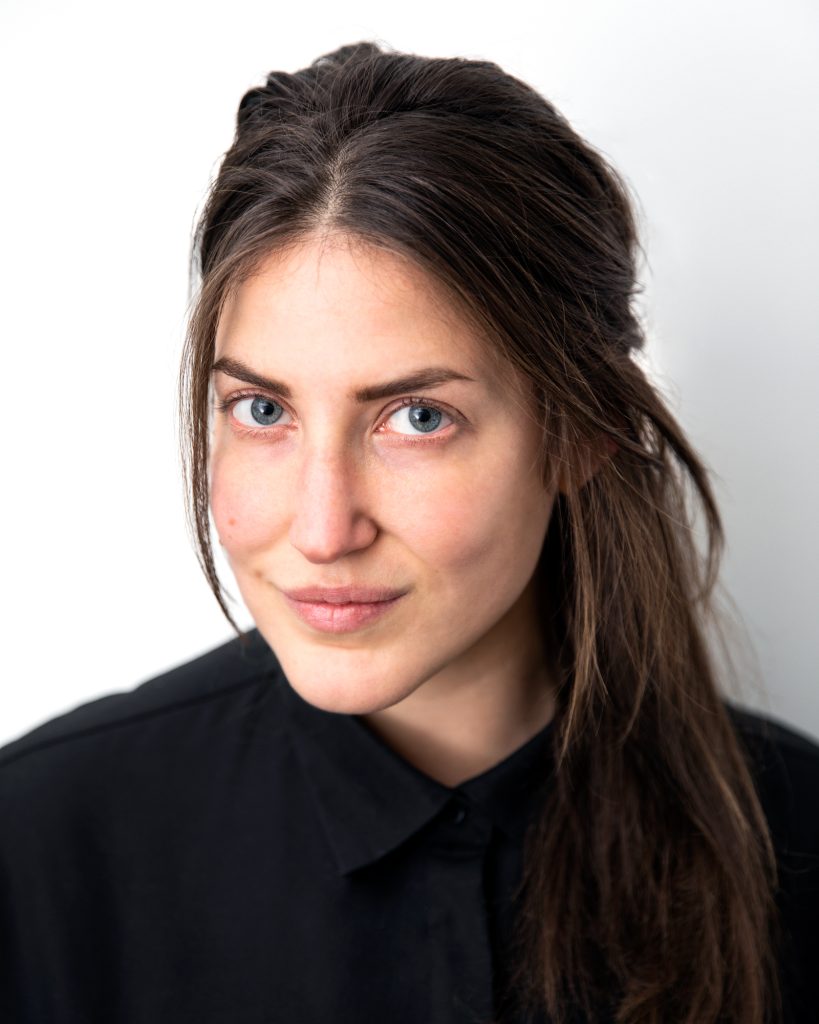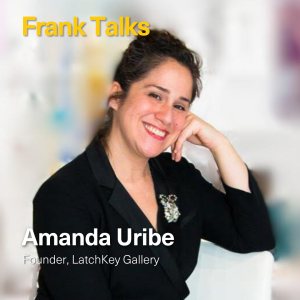Alexandra Rosenberg is the Executive Director of CPR – Center for Performance Research, and has worked as a curator, producer, and arts manager in NYC for nearly 15 years. She was the Producer at MoMA PS1 from 2017-2020. In 2013, she founded Rosie Management, Inc., an independent artist management company which represented artists including Maria Hassabi, Annie Dorsen, Jen Rosenblit, Ann Liv Young, Dynasty Handbag, Alex Waterman and Robert Ashley, and many others, producing work at dozens of venues, exhibitions, and festivals around the world. Rosenberg is a life-long New Yorker, and holds a B.A. from Bennington College.
What was your first job in the Arts and what was the most useful or important thing you learned in that experience?
I was hired straight out of college to work the box office at The Chocolate Factory, an incubator for performance in Long Island City. I ultimately stuck around for almost five years in a part-time role as House Manager and Executive Assistant. There, I learned how working with artists to develop their work can be personal, intimate, and creative, and also how important and impactful small non-profits are in the arts landscape.
Tell us a little more about yourself. When did you realize you wanted to pursue a career in this industry?
I was an outcast, precocious, bossy, know-it-all kind of kid. Ha! How’s that for honesty? My middle school in Queens hired this guy to start a theater program there. He saw something in me, and helped me sort of transform these more – shall we say – “difficult” traits into qualities of creative leadership, management, and service. He trained me as a stage manager and director (yes in middle school!), and I never looked back. I’ve been in charge of things and have made creative stuff happen ever since. And throughout my formative years, I had a series of what I refer to as “avant-garde moments” – these sort of revelatory experiences with art and culture that have served to clarify and intensify a dedication to experimental work.
What do you do now?
I’m the Executive Director of CPR – Center for Performance Research in Williamsburg, where I oversee programming and operations. We support artists across disciplines with a focus on dance, performance, time-based, and embodied artforms, and our programs are oriented around artistic process, experimentation, and research. I’m the only full-time employee, and am supported by a small and wonderful part-time staff.
Where are you from and what is the arts community like there?
I grew up in Queens, and went to a public high school in Manhattan which was focused on math and science. That wasn’t really my thing, but I met really interesting, creative, smart kids from all over the city – punks, freaks, nerds, vampires, ravers (it was the late 90s, ok?) – and focused less on my grades and more on creative self-expression. We were all little performance artists! New York City was our playground, our muse, our stage.
Has where you come from shaped what you do in the arts today?
Yeah, of course. I feel really fortunate to have grown up in NYC, and to have been exposed to so many weird and wonderful things and people.
What is the best piece of advice you can give about working in the art world?
Be a yes person. Always be willing to roll up your sleeves. Never think that any task, or any one, is above or below you. Be your own intern and your own boss. (and always pay your interns!)
What is one of the greatest accomplishments in your career so far? And what has been a challenge?
Joining CPR in November 2020, I inherited a venue and organization that was totally shuttered, and at a complete standstill, with live performance predicted as the last sector to recover from the pandemic. Working with CPR’s board, staff, and community to reopen CPR safely, while continuing to center the needs of artists and serve our community, is something I am extremely proud of.
How is your current job adapting to the ever-changing digital landscape? What do you think can be done better, if anything?
With the incredible support of the Howard Gilman Foundation, we’ve outfitted CPR with a suite of film equipment and streaming technology. We can now welcome visitors both in-person and virtually, and offer artists a place to make work for film, in addition to live performance, supporting multiple platforms for artists to create and present their work. I’m excited to continue to explore virtual presentation with artists, not just as a supplement for the live experience, but as its own realm of creative possibility.
What is one of the weirdest things you have had to do on the job?
How much time do we have? Ok, here’s one. I once transported a giant plastic Buddha lamp in an upright bass case on my back from New York to Brussels.
What do you think defines a good employee? And what defines a good boss?
I like employees who take initiative, and who own and assert their creative agency. As a boss, I always make a point to acknowledge that effort, no matter the outcome, in order to encourage independence, ownership, and leadership at all levels. I’m committed to decentralizing modes of power in our industry.
What is your advice for making yourself stand out in the workplace? Any good tips for giving a great interview?
My interview advice: do your research! Come prepared to talk about the work of the organization or artist you are interviewing for, your personal connection to that work, and how your experiences and ideas align with their mission. Painting a detailed picture of being rooted in the work can be really effective.
What artwork is/was in your home office?
Suspended over my desk is Paintings of Illustrations of Women at Work, a publication of images that “depict woman in a host of occupations” by Maia Ruth Lee, published by Peradam. I purchased it at the New York Art Book Fair in 2019.
What is/was your greatest WFH challenge? Or a WFH luxury you don’t want to lose ever again?
I’m lucky to have a small extra room at home that I use as my office, with a door that leads out to a garden. On nice days, I leave the door open, and my rescue terrier, Turtle, pops in and out to dig holes or sunbathe. What joy. WFH has allowed me to soften to my own humanity, and to the humanity of others, while at work.
What aspect of the art world in 2022 are you most excited about?
I’m excited to see how we all continue to find points of connection and collaboration – between artists, institutions, curators, collectives. As a colleague recently put it to me, now is the time for radical collegiality. I hope that sentiment sticks around for a long time.
Is there any advice you would like to give people entering the art world?
Sure. Be humble, be kind, answer every personal invitation.
What is the best exhibition you have seen recently?
I loved Moriah Evans’ Repose at Rockaway Beach in August 2021. The work was so open, so playful, so present, so sensorial. And it was such a beautiful expression of community, at just the right moment in time – to witness dancers, as far as the eye could see, from different lineages and generations, all dancing together on the beach, seemingly without end.
How do you think the art world can become more transparent?
We need to be more transparent about resources – artist fees, salaries, opportunities, relationships. Let’s admit where we fall short, and vow to do better for artists and cultural workers, and each other.
How do you think art should be shared and/or experienced moving forward?
At CPR, we’re committed to fostering a creative environment where process isn’t always about product. With our programs, we’re ideally catching an artist in the midst of something. This to me is an incredibly rich and valuable place to see work. What if the ending never arrived?
If you could own a work by 5 different artists, who would be in your collection?
Sophie Calle, Nikita Gale, Maria Hassabi, Azikiwe Mohammed, Mary Corse




